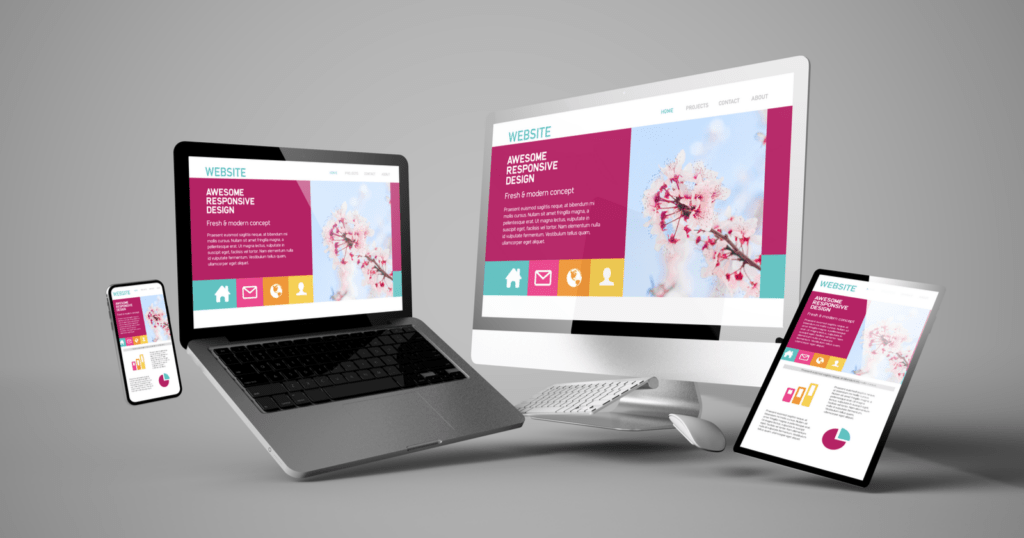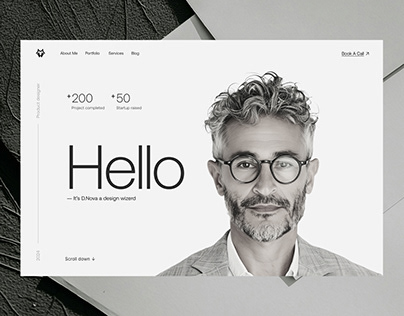Leading Tips for Creating an Impactful Web Site Design That Converts
In today's electronic landscape, the relevance of an impactful web site style can not be overstated, particularly when it involves converting site visitors right into consumers. To achieve this, one should think about a range of elements, including recognizing the target audience, focusing on customer experience, and maximizing for mobile systems. Furthermore, the strategic usage of engaging call-to-actions and a distinct visual power structure plays a crucial duty in directing users via their journey. As we check out these necessary aspects, it becomes noticeable that the success of your website rests on greater than just appearance; it needs a thoughtful strategy to layout and functionality.

Understand Your Target Audience
Comprehending your target audience is basic to effective internet site layout, as it lays the groundwork for producing an interesting user experience. Identifying who your users are, including their demographics, choices, and actions, enables developers to tailor the internet site's web content, format, and capability to satisfy specific requirements.
Performing complete marketing research is essential in this process. Studies, interviews, and analytics can supply beneficial understandings right into user expectations and discomfort points. By assembling this data, developers can create individual identities that represent various sections of the audience, ensuring that design decisions are notified and relevant.
Additionally, understanding the target audience helps in choosing proper layout components such as shade plans, typography, and images that resonate with individuals. A site that speaks directly to its audience promotes a feeling of connection and depend on, encouraging longer sees and greater conversion prices.
Eventually, a user-centered approach to website style not only improves individual satisfaction but also supports business purposes by driving engagement and loyalty. By prioritizing the demands and preferences of the target market, an internet site can effectively serve its function and achieve desired end results.
Prioritize User Experience
To enhance the total effectiveness of an internet site, prioritizing customer experience (UX) is vital (Website Design). A well-designed UX makes certain that visitors can browse the site easily, locate information rapidly, and engage with content meaningfully. This brings about increased user satisfaction and higher conversion prices
Begin by executing instinctive navigating. Menus should be logically structured, enabling customers to situate key locations of the site with very little initiative. Consistency in style elements, such as color design and font styles, cultivates experience, which is important for preserving user involvement.
Furthermore, think about the loading rate of your web site. A hold-up of just a few secs can bring about significant drop-offs, as users are much less most likely to wait for a slow-loading page. Streamlining images and optimizing code can boost performance and preserve visitors.
By focusing on customer experience, you not only create a more delightful setting for site visitors but additionally enhance your brand name's reliability. Inevitably, a focus on UX is a financial investment in the lasting success of your web site.
Maximize for Mobile Instruments
Enhancing for mobile devices is vital in today's electronic landscape, where an enhancing number of customers gain access to web sites with smart devices and tablets. A mobile-friendly style not just improves user experience yet additionally plays a considerable duty in improving online search engine positions. To achieve this, it is necessary to embrace a responsive style that automatically adapts helpful resources to different display sizes and orientations.

Filling speed is one more essential variable; mobile individuals are generally less patient and anticipate quick access to details. By prioritizing mobile optimization, you ensure that your site stays affordable and efficiently engages a more comprehensive target market.
Use Compelling Call-to-Actions
A website's performance typically rests on its capacity to lead visitors toward preferred activities, making compelling call-to-actions (CTAs) important elements of style. CTAs act as the critical factors that guide individuals to involve with the website, whether that implies making an acquisition, signing up for a newsletter, or downloading and install a resource.
To develop efficient CTAs, clearness is paramount. Use click here now succinct language that clearly interacts the action you want the individual to take.
Furthermore, the style of CTAs should stick out without being obtrusive. Use contrasting shades and clear typefaces to ensure they capture attention. In addition, take into consideration making use of directional hints, such as arrowheads or pictures, to assist customers toward these buttons. By focusing on these aspects, businesses can considerably improve individual involvement, driving conversions and ultimately accomplishing their internet site's goals.
Concentrate On Visual Pecking Order
Efficient website design depends heavily on a well-structured visual power structure that guides customers via content effortlessly. By arranging components in a fashion that prioritizes details, designers can improve customer experience and assist in decision-making. This includes using dimension, color, contrast, and spacing tactically to accentuate the most critical parts of a web page.
Using bigger font styles for headings and subheadings establishes a clear difference between different sections, enabling users to check material easily. Furthermore, utilizing different shades for buttons and calls-to-action can catch user attention and encourage interaction. Whitespace is an additional important element; it avoids mess and allows individuals to focus on essential messages without distractions.
Images and graphics should enhance the text while also sticking to the established pecking order, enhancing the total message (Website Design). Consistency in design components, such as color design and typography, additional reinforces the visual pecking order, making additional resources navigating instinctive

Verdict
In verdict, reliable site design necessitates a comprehensive understanding of the target audience, prioritization of individual experience, and mobile optimization. The calculated usage of engaging call-to-actions and a distinct visual hierarchy even more enhances customer interaction. By carrying out these concepts, internet sites can achieve higher conversion prices, making certain that design aspects not only attract visitors yet also help with smooth navigating and communication. Ultimately, a well-executed site style offers as an important element in driving individual activities and accomplishing service goals.